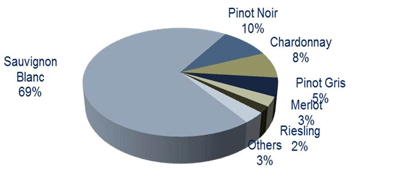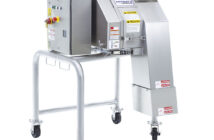By Natasha Telles D’Costa, research manager, New Zealand GIC, Frost & Sullivan
While dairy exports continue to remain the mainstay of the New Zealand economy, there is a growing interest in focusing on newer food and beverage export sectors to emulate the success witnessed with the dairy sector.
With its comparative geographic isolation and intensive focus on biosecurity, New Zealand agricultural produce is considered among the highest quality natural produce available globally. Agricultural produce accounted for 54 percent of overall NZ exports in 2012 and is expected to continue to remain the lynchpin of the country’s export sector in the years to come.
Beyond dairy
The advent of the economic slowdown has brought into focus the hazards of potentially ‘placing all our 
Meat sector
Developed market analysis – sheep and beef
Meat from sheep in New Zealand accounts for the second largest export sector after dairy. Sheep meat includes the larger market of meat from lamb, sheep, goat and ram, and has grown from 1.9 billion dollars in export in 2008 to $2.3 billion in export in 2012. While the US, China, UK and Germany currently account for over 53 percent of NZ sheep meat exports, this dynamic is expected to change as the European markets focus on reducing imports and increasing domestic production.
The shift of exports is thus moving to newer markets such as China and Jordan. The Middle East with its Muslim population (pork is not allowed) is expected to emerge as a key lamb export destination over the next ten years – primarily led by Jordan and Saudi Arabia. This changing face of NZ’s lamb customers will be apparent as the emerging world becomes more affluent and meat consumption moves from being a luxury to a necessity. Another meat sector witnessing increasing growth is that of beef, which has witnessed growth rates of 10.5 percent from 2010 to 2012. The US is the largest importer of New Zealand beef – accounting for 50 percent of overall demand though exports have dropped at the rate of 15 percent since 2010 on the back of a strong US focus to reduce imports. Present growth is and will be spurred by increasing demand from South East Asia and China where beef consumption is on the rise.
Future focus area – seafood
Surrounded as it is by some of the most fertile fishing waters in the world, New Zealand’s seafood sector is poised to take advantage of these benefits. As global seafood consumption grows and fishing stocks, particularly in Europe, face dwindling fish populations, the Kiwi seafood sector is witnessing increased export demand. Overall, seafood exports grew 10 percent since 2010, evaluated at almost a $US2 billion market in 2012.
A key growth area in this sector is the harvesting of seafood for downstream products, particularly the omega-3 sector, which provides additional avenues of growth for seafood farmers as well as processors. Another growth area is the salmon fishing and processing industry, which is witnessing double digit growth rates and increased interest from importing nations.
Alcoholic drinks sector
Developed market analysis – wine
Arising from a domestic focused home brand market, the New Zealand wine industry has grown by leaps and bounds over the last decade to emerge as a key export sector for the alcoholic beverage market. The wine industry grew by a CAGR of 12.5 percent from 2010 to 2012 and this growth is expected to increase further as Kiwi wine exporters become more aggressive in their aim to take Kiwi wine to the world.
In 2012, Australia accounted for 30 percent of total exports making it the largest customer market of the almost US$1 billion Kiwi wine export market. New Zealand wine, particularly its sauvignon blanc variety has become world famous and is witnessing increased demand, though this demand is currently focused in the developed world where Kiwi wines compete in the highly aggressive supermarket channels. The key importers of NZ wine are Australia, United Kingdom, USA and Canada, who account for 85 percent of total export demand.
There is increasing interest in NZ wine in emerging markets particularly in countries such as China and Singapore, where increasing affluence and wine drinking are seen to go hand in hand. Indeed the Chinese wine market is growing at over 10 percent year-on- year and New Zealand wine makers are aiming to swoop in on this demand as affluence rises. In 2012, NZ wine exports to China were estimated at 2.2 million litres valued at US$24 million. The total Chinese market consumption of wine in 2012 was estimated at over a billion litres, which proves that there is much scope for growth in the Chinese wine market penetration.
Future focus area – spirits
Spirits account for a potential future growth area for New Zealand as the country focuses on claiming a share of these ever increasing markets. Though still a comparatively small market sector at US$45 million in 2012, the demand for spirits is expected to grow especially in the export sector. Singapore accounted for the single largest growth market in 2012, growing at a CAGR of 30 percent since 2010. As is the case with wine, the developed markets of Australia, USA and Canada still dominate the market though these countries are increasingly losing market share to Asian economies. Demand from Asia is expected to be a key growth area for spirits from New Zealand over the next five years.
Conclusion
As New Zealand continues to focus on opening up its export sectors, key growth will come from smaller markets estimated at under a 100 million. As these markets develop there is a need for focused industry organisations to drive their growth and their Kiwi produce to the world at large.
The work of the NZ Wine Growers Association and the wine industry at large is to be admired and emulated if the export sector is to rake in the big bucks. Focused analysis of key customer growth markets and aggressive market penetration is a necessity in order to understand and gain first comer advantage in these countries. One such example is the New Zealand dominance of goat milk powder in Taiwan, a niche export market where Kiwi exports dominate over domestic products as well.





























































































